2024 REU Participants
Ameris Chadband

Plant and Soil Science Major at West Virginia State University
Class of 2025
www.linkedin.com/in/ameris-chadband-97328530b
My focus is environmental protection, specifically soil conservation. Growing up in West Virginia and being surrounded by the natural beauty of the state encouraged my interest in Biology. In the past I have worked on a research project looking at acid mine drainage treatment systems and how we can obtain rare earth elements from them. This promotes a local source of the elements and a more passive process of obtaining them as well. I am now researching how biochar can be used as a soil amendment for soils in Appalachia. During my REU experience, I participated in community outreach, fieldwork, sustainable gardening, and interpreting results from previous research done at Appalachian State University in Sustainable Development. I plan on attending graduate school after completing my bachelor’s degree.
I enjoyed collaborating with other students in STEM and have found a community of people aiming for the same future as myself thanks to the STEPS program.
Research Poster: Integrating Nutrient Cycling Research with Sustainable Agricultural Practices and Outreach
Project Description
Nutrient cycling is central to our projects on phosphorus sustainability. The sustainable development garden at Appalachian State University focuses on nutrient cycling. By working with Dr.Fanatico I managed seasonal crops, practiced on-site composting, used biological pest control, and employed efficient irrigation. These activities provided fresh food for students, hands-on learning, and community building. Outreach included working with Frontline 2 Farm, helping veterans transition to farmers. We attended presentations regarding agritourism, sustainable agriculture, farm-credit funding resources, meat marketing, and more. As part of education and community outreach; I helped demonstrate the work on Black Soldier Flies and how to capture them for chicken feed at Against the Grain. Collaborating with Dr. Ogwu, we soil sampled at an Archeological site in Robeson County within the tribal lands of the Lumbees as a part of the “STEPS Braiding Knowledge” project, exploring traditional farming methods and their impact on sustainable farming practices. Soil and water sampling will be done at Ore Knob – an acid mine drainage site, in collaboration with other STEPS labs to understand the benefits of remediation efforts from a phosphorus standpoint. To contribute to the ongoing work in the lab, I contributed to two research papers with a focus on improving soil health and supporting efficient plant growth and development. The work highlights the importance of microbial activity in the rhizosphere, adopting effective fertilization methods that avoid negatively impacting the soil, and overall enhancing the soil microbiome. Other project activities include a Bibliometrix-based systematic review of global phosphorus research trends and soil analytical reports. Additionally, we engaged with Upward Bound high school students, teaching them about sustainable gardening, seed characterization and analysis, microscopy, and presentation skills.
Ho Wa Chu

Environmental Engineering Major at Columbia University
Class of 2026
https://www.linkedin.com/in/ho-wa-chu
I have an interest in concentrating on water resources, which is why I chose a research topic related to wastewater treatment and nutrient removal. I had two previous research experiences: one was a summer REU at Texas A&M – Kingsville studying the impact of COVID-19 on the agricultural supply chain, and the other was my capstone project at Colby College evaluating the effectiveness of vegetation and constructed breakwaters in mitigating soil erosion caused by wind along the lake shoreline using Delft3D modeling. For this REU experience, I worked extensively with bioinformatics software, learning the workflow, understanding each program’s function, and identifying the resources required to run specific programs. As for future plans, I would like to explore careers in industry or government. I am hoping to gather more internship experiences and, if needed, attend graduate school as well.
Research Poster: Metagenomic Analysis of Polyphosphate-Accumulating Organisms During Upset Events
Project Description
Polyphosphate-accumulating organisms (PAOs) play a crucial role in enhanced biological phosphorus removal (EBPR) within a wastewater treatment system. Their unique characteristics allow for the hyper-accumulation of phosphorus, up to 15% of their dry weight, further preventing additional nutrients from entering waterways. However, observed instability events have disrupted PAO activity, reducing their phosphorus removal efficiency. The purpose of this study is to recover individual PAO genomes from metagenome samples using computational software. Eight samples from a full-scale water reclamation facility were taken before, during, and after an upset event for DNA sequencing. The short-read DNA sequencing data are then placed into our bioinformatic analyses process. The workflow includes assembling short reads into contigs, mapping reads onto these contigs, binning contigs to form metagenome-assembled genomes (MAGs), and annotating the MAGs to identify gene content. The MAGs were assessed for information such as mean coverage, variability, completion, and redundancy estimates. Taxonomy was estimated through checking the presence of 22 known microbial single-copy core genes across all our bins. The resulting MAGs identified as PAOs, and their quality metrics will be reported. Furthermore, the high-quality MAGs created in this study will serve as vital reference genomes for RNA transcripts to evaluate gene expression. Genes specific to PAOs will be examined across the different time points of an upset event, providing information on whether certain genes are expressed more, less, or relatively the same. Ultimately, this study will allow for a deeper understanding on the functionality of PAOs impacted by an upset event.
Aaron Dai

Computer Science Major at the University of Virginia
Class of 2026
I am a computer science major and I am passionate about the field because I really enjoy solving computational problems. During my REU experience, I worked on ways to improve the computational efficiency of quantum mechanical simulations. In the future, I plan to either explore jobs within my industry or apply to graduate school.
Research Poster: Enhancing Quantum Data Analysis through Machine Learning and Numerical Techniques
Project Description
Utilizing computational methods to research chemistry through the lens of quantum mechanics generates important insights about chemical phenomena, but computational demands quickly become prohibitive. This research aims to accelerate two of these computational methods widely used in practice, namely the popular machine learning approach Gaussian Process Regression (GPR) and the ubiquitous computational problem of Hermitian matrix diagonalization, via the application of randomized numerical linear algebra (RNLA) techniques. The first part of the study improves GPR by employing RNLA to optimize the training data, thereby improving speed without sacrificing accuracy in a new methodology named aggregated Gaussian Processes (AGP). This AGP approach will be applied to a large dataset of quantum calculations of phosphate interacting with a metal oxide surface in an aqueous solution, which is too large for the application of classical GPR due to the memory requirements. The AGP approach aims to make these large datasets feasible while maintaining the performance of GPR. The second part of the study will utilize RNLA techniques to accelerate the process of solving large diagonalization problems which appear in both GPR and the underlying quantum chemical calculations. The application of RNLA techniques such as randomized preconditioning and randomized sketch-and-solve are explored, which have demonstrated a high degree of success in various test applications outside of quantum chemistry. The improvements are expected to provide a large increase in computational efficiency with minimal loss of accuracy, hopefully broadening the class of systems on which the quantum chemical calculations and GPR may be performed.
Olivia Davidson
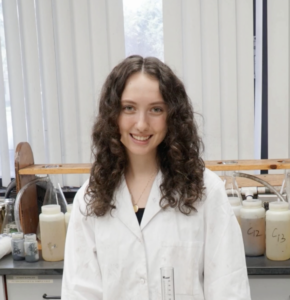
Biological Science and Botany Major at Connecticut College
Class of 2025
https://www.linkedin.com/in/olivia-quinn-davidson
My interest in agricultural science took root in my grandmother’s garden, and has since bloomed into a fascination that has driven my academic and career aspirations. I am currently a senior at Connecticut College pursuing dual majors in biological science and botany, and a minor in environmental studies. As an aspiring researcher, I am eager to learn the ins and outs of conducting a research project. As a STEPS REU intern at the Everglades Research and Education Center (EREC), I gained field and laboratory experience collecting and measuring soil and water samples within the Everglades Agricultural Area (EAA). The projects I assisted on were focused on water quality, nutrient runoff, and stakeholder collaboration in the agricultural sector. Throughout the summer, I developed a holistic understanding of the phosphorus crisis in South Florida. Working closely with motivated PhD students has encouraged me to pursue my own graduate studies, and the interdisciplinary knowledge I received has tailored my career interests.
The STEPS REU was one of the most fulfilling and rewarding experiences of my budding career. Coming into this internship, I was eager to participate in the research process and get a glimpse of what life as a graduate student may be like. Through this program at the Everglades Research and Education Center (EREC), I am grateful to say that I learned just that. In addition to the laboratory and field skills I gained, I’m thankful to have met a network of brilliant students and faculty in both the STEPS community and at the EREC.
Research Poster: Delineating Subsurface Phosphorus Flow in the Everglades Agricultural Area (EAA) Using Saturated Hydraulic Conductivity (KSAT)
Project Description
At the Everglades Research and Education Center (EREC), I worked with PhD student Xue Bai and my mentor Dr. Jango Bhadha on delineating subsurface phosphorus flow in the Everglades Agricultural Area (EAA) using saturated hydraulic conductivity. The EAA in South Florida is an approximately 3000 square kilometer region just south of Lake Okeechobee that grows a significant portion of the nation’s sugar cane, sweet corn, winter vegetable, and rice supply. The EAA is characterized by its unique muck soils, or Histosols, that are rich in organic matter and have the ability to hold onto moisture, which allows for this productive crop growth. Approximately 85% of the EAA is maintained through sub irrigation through a system of canals and ditches that bisect through the agricultural fields. The canal system used to sub-irrigate the EAA flow unidirectionally from Lake Okeechobee to the Atlantic Ocean and the Everglades National Park, presenting concerns for water quality conditions due to nutrient runoff from the farmlands across the soil-water interface. A piece of this major concept is understanding saturated hydraulic conductivity, or KSAT, which defines the ability of a saturated soil to transmit water. KSAT is a very important concept regarding runoff, as soils with a higher saturated hydraulic conductivity may indicate more rapid phosphorus movement out of the agriculture field and into the ditch. Throughout my ten-week internship, I assisted in collecting a total of 60 soil samples in the sugarcane fields of the EAA to determine their saturated hydraulic conductivity values and compared the results to total phosphorus (TP) concentration data in the agricultural ditches to decipher any patterns.
Brionna Findley

Biological Engineering Major at North Carolina Agricultural and Technical University
Class of 2025
https://www.linkedin.com/in/brionna-findley-93aa77217
As a participant in the dual degree program at Spelman College and North Carolina Agricultural and Technical University, I have immersed myself in the fields of environmental science and biological engineering. My journey has been fueled by a passion for understanding and addressing critical environmental challenges. With a strong interest in agriculture, soil, and water quality, I aim to become a distinguished biological engineer, leveraging my expertise to make a meaningful impact. During my studies, I have engaged in pioneering research on the interaction between the ocean and atmosphere, and exploring vital topics such as urban heat islands, climate change, and paleoclimate. This summer, I focused on analyzing phosphorus pollution in agriculture, gaining valuable insights into its environmental impacts and exploring potential solutions. Looking ahead, I am excited to continue my research on pollution and its effects on the ocean, atmosphere, and agriculture. I am eager to broaden my understanding across various fields within environmental science and biological engineering and to contribute to innovative solutions that promote sustainability and environmental health.
Research Poster: Analyzing Agricultural Phosphorus Flow in the Florida Everglades
Project Description
Agriculture serves as a significant source of phosphorus (P) pollution, with runoff posing substantial risks to downstream watersheds. Due to the limited availability of P in agricultural soils, fertilizers and livestock manure are essential for promoting plant growth. Scientists are actively exploring strategies to manage P more effectively, pinpoint its sources, and mitigate its impact on watersheds. This study focuses on assessing agricultural P sources in the Florida Everglades watershed from 2022. Drawing from methods in a recent study of the Kendrick Creek Watershed in Washington County, North Carolina, this research estimates P contributions from dominant crops in the watershed. Using data mining and a literature review, the study aims to construct a detailed P flow diagram for the Everglades watershed. These methods not only support local watershed management but also provide a framework for estimating P dynamics in other regions, offering visual insights that can inform sustainable solutions for the Everglades watershed and beyond.
Michael Gerfen

Biophysics Major at Amherst College
Class of 2027
www.linkedin.com/in/mike-gerfen-b75351244
I’m currently working on a biophysics degree with the aspiration to complete a certificate in sustainability studies as well. I’m fascinated by the intersection of biology and the synthetic, and I believe that there are numerous ways natural processes can be utilized to create a more sustainable and environmentally friendly global lifestyle. During my REU experience, I worked at a UF research site in the Everglades Agricultural Area with Dr. Jango Bhadha and MD Anik Mahmud. In the future, I hope to get a Master’s Degree and potentially move further into a PhD.
STEPS provides an elite opportunity in both exposures to personal stakeholder research and lab/fieldwork experience. I am extremely lucky to have had the opportunity to be a part of this program and I look forward to seeing great things come from this research.
Research Poster: Evaluating the Bioavailability of Residual Phosphorus in Organic, Calcareous, and Acid Soils
Project Description
Within agriculture, there is a question about the environmental hazards of over-fertilizer applications. The wrong amount of application can cause both poor crop yields and fertilizer runoff, the latter of which leads to massive ecosystem disruption to the water bodies this fertilizer eventually reaches in the form of eutrophication. This research studies the availability of residual P in soil samples to better understand the relationship between P already present in soils but inaccessible to plants and newly applied P from fertilizers. The soils are tested for P bioavailability by introducing gluconic acid and shaking before filtrating. Enzymes, pH analysis, electron probe microanalysis, total P ICP-OES, and UV-vis spectrometry with Molybdenum methods are all used in subsequent stages to help simulate the variety of ways P interacts with soils. To gain a perspective on bioavailability in different soils, such as acidic soils from North Carolina, calcareous soils from Arizona, and organic soils from South Florida. Results should reveal that the residual P in soils can be made more bioavailable through the methods used in this research. This would help scientists to develop interventions to utilize the “legacy-P” from soils that would otherwise not have been bioavailable. Eutrophication can also be minimized by unlocking residual phosphorus to minimize fertilizer use. Finding a solution to releasing legacy P from soils is at the core of this research. Increasing our P-use efficiency will protect the environment and save growers money through reduced fertilizer application.
Eddie Heinen
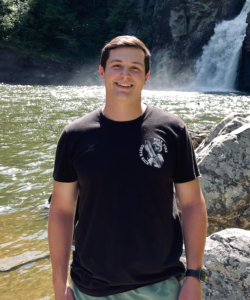
Environmental Chemistry and Spanish Major at the University of Mississippi
Class of 2025
www.linkedin.com/in/eddie-heinen-a41667246
I first became interested in environmental chemistry in high school after reading Rachel Carson’s Silent Spring. In college, I pursued this interest further by working as a technician at the USDA National Sedimentation Laboratory in Oxford, MS, where I measured soil phosphorus concentrations using UV-Visible spectroscopy. This experience sparked my interest in nutrient pollution and the use of analytical chemistry to understand nutrient dynamics and prevent eutrophication. I also explored the impacts of microplastics in agricultural systems using µ-FTIR in my research at my university. During my REU with the STEPS center, I used ICP-OES to quantify total phosphorus in the Upper South Fork of the New River near Boone, NC. Currently, I am working on my senior thesis on microplastics in flooded fields and preparing to apply to environmental chemistry PhD programs, with the ultimate goal of a career at the EPA or USDA.
Research Poster: Phosphorus Dynamics in the Headwaters of the Upper South Fork of the New River
Kemberly Nertulus

Global Health and Environment Major at Washington University in St. Louis
Class of 2027
Since my childhood in South Florida, I have been deeply interested in the environment and climate change, largely due to my firsthand experiences with natural disasters such as hurricanes and floods. This sparked a desire to be involved in mitigating the effects of such disasters and minimizing their frequency in the region. Consequently, during high school, I actively engaged in clubs where I not only expanded my knowledge of climate change mitigation but also imparted this knowledge to others. Additionally, I harbored an interest in the field of medicine and the prospect of providing aid to individuals. Initially, I perceived these interests as distinct paths. However, I came to recognize the interconnectedness of human health and the environment. This realization led me to pursue a field that allows me to comprehend the relationship between the environment and overall health, with the aspiration of effecting enduring change in the realm of medicine later in life. The STEPS program has been instrumental in shaping my direction and fostering my enthusiasm for multidisciplinary thinking by demonstrating how various disciplines can collaborate to address multifaceted issues.
Research Poster: Be aware of public health risks associated with phosphorus!
Project Description
Phosphorus (P) is crucial for the bodily functions and growth of animals, plants, and humans, but excessive use can pose harm to both the environment and human health. While the recommended phosphorus intake for adults is 700 mg/day, the average daily intake is approximately 1400 mg/day. Excessive phosphorus consumption can result in conditions such as hyperphosphatemia, which has been associated with cardiovascular disease, hypertension, and chronic kidney disease, among others. The objective of this research was to conduct an extensive review of current prevention methods aimed at reducing the health impact of phosphorus and to investigate initiatives designed to raise public awareness about phosphorus consumption, thereby reducing its presence in our food products. Validity was ensured through a comprehensive review of scholarly journals and articles on the impact of phosphorus on public health. The information gathered has been formatted for presentation to a specific demographic of stakeholders, in a retirement community at Clemson, South Carolina as the elderly are most vulnerable to health conditions resulting from excessive phosphorus consumption. The investigation concluded that excessive phosphorus intake is often linked to food additives, particularly in meats, takeout, and processed foods. It is imperative to comprehend the appropriate levels of phosphorus exposure for the public and to conduct further assessments on the health consequences of calcium and phosphorus imbalance. In light of phosphorus’s multifunctional roles in various physiological and pathological processes, additional research and public health interventions are necessary to limit excessive phosphorus intake.
Matthew Oberlander
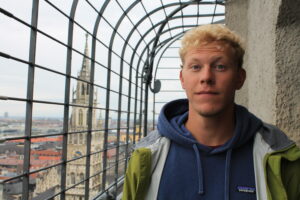
Chemistry and German Major at St. Olaf College
Class of 2025
https://www.linkedin.com/in/matthew-oberlander-4748a1299
As a kid, I enjoyed spending as much time outside I as possibly could by hiking, skiing, fishing, and playing sports. Through these activities, I gained an appreciation for physical science, chemistry in particular. It has always been my goal to apply chemistry to the issues the world is facing right now such as climate change, clean energy sources, and environmental protection and sustainability, which was a huge draw for me to the STEPS program. During this REU I got to work with Professor Christopher Gorman of the chemistry department and his wonderful group of grad students to create polymers with the goal of increasing our sustainability of phosphorous use and minimizing its environmental impacts. I am looking forward to spending my senior year at St. Olaf to finish my degrees, and hopefully pursue a PhD in Chemistry starting in the fall of 2025.
Research Poster: Polymer Design for Phosphorus Sorption and Desorption
Project Description
Phosphorus is a fundamental element needed for life and is currently being unsustainably sourced from phosphate mines. Almost all the mined phosphorus is used to supplement fertilizers for crop growth, however much of it becomes trapped in minerals where it is not bioavailable to plant life or accumulates in waterways causing harmful algal blooms and eutrophication. The goal of this project is to adsorb and desorb phosphorus by systematically synthesizing acrylamide-based polymers. By characterizing each polymer, and comparing the effectiveness of the corresponding side chains in adsorption/desorption tests, their application in real-world scenarios can be assessed and further developed. The use of these polymers would allow better control over the fate of phosphorus, increasing its bioavailability, decreasing the risk of algal blooms, and reducing our reliance on mined phosphates, ultimately making phosphorus use more sustainable.
Willa Regal
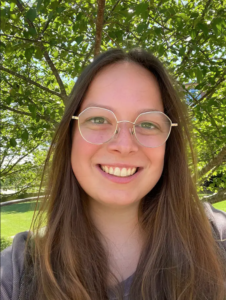
Environmental Engineering Major at the University of Vermont
Class of 2026
www.linkedin.com/in/willa-regal-4a3346256
I am a junior at the University of Vermont, pursuing a degree in environmental engineering with a minor in chemistry. Originally from Erie, PA, I grew up on the shores of Lake Erie where I developed an appreciation for freshwater ecosystems and their importance at a young age. Witnessing the annual summer algal blooms that would shut down Lake Erie and its beaches inspired me to focus my studies on water conservation and quality. After graduation, I plan to pursue graduate studies, aspiring to conduct research dedicated to the Great Lakes. This summer at North Carolina State University, I had the opportunity to learn new computational modeling tools and expand my knowledge of the ones I was already familiar with. Working under Dr. Obenour, my research focused on improving algae predictions from phosphorus and nitrogen levels in lakes by incorporating lake water temperature.
I am incredibly grateful to STEPS for providing me with the opportunity to kick-start my research career in the exact field I am passionate about. The STEPS community is very welcoming and filled with amazing and interesting people I am glad I had the chance to meet this summer.
Research Poster: Integrating Temperature to Improve Nutrient-based Algal Predictions Across the US
Project Description
High levels of phosphorus (P) and nitrogen (N) in lakes correlate to an increase in algae (chlorophyll-a) and a reduction in water quality. Accurate predictions of chlorophyll-a based on N and P concentrations are therefore crucial in managing watersheds and aquatic health. However, algal predictions based on nutrients alone are subject to substantial uncertainty. The purpose of my project is to enhance chlorophyll-a prediction by considering the role of water temperature in mediating algal-nutrient relationships. I used data from the National Lakes Assessment (NLA) conducted by the EPA, which surveys over 1,000 lakes across the continental US every five years (2007-2022). N and P concentrations, chlorophyll-a levels, and average lake water temperature were used to formulate a predictive model. The average lake water temperature was calculated by averaging the temperature measurements within the first meter of the lake, the same depth at which nutrient and chlorophyll-a levels were recorded. The resulting model supports a nonlinear regression approach. Considering that phosphorus is often a focal point of watershed management, the model can be used to assess which lakes are most sensitive to changes in P concentration. The model will also potentially be used to incorporate other lake characteristics, such as depth, to increase prediction accuracy.
Callie Showalter
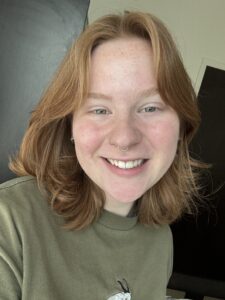
Environmental Science & Data Science Major at Smith College
Class of 2026
www.linkedin.com/in/callie-showalter
I am a rising Junior at Smith College, double majoring in Data Science and Environmental Science. I have long been passionate about the environment and animal welfare. I am very interested in the animal agriculture industry and its impacts on social justice, public health, animal welfare, and the environment. This summer I worked in Dr. Rebecca Logsdon Muenich’s lab on a research project examining the impacts of animal feeding operations on groundwater quality in Nebraska. I hope to continue on to graduate school, in either a data science or a biostatistics program, which will allow me to gain practical education to apply my statistics skills to public health and environmental challenges. I eventually want to pursue a career in which I can utilize my skills surrounding data to aid in the mitigation of environmental issues, and hopefully improve our planet for both humans and animals alike.
Doing the STEPS REU program was very worthwhile! Everyone involved is very helpful and just wants to see you succeed. I learned a lot of valuable skills from my research project, like ArcGIS, and I also got the chance to meet a lot of fantastic people.
Research Poster: Assessing the Relationship Between Groundwater and AFOs in the Loup Watershed, NE
Project Description
Animal feeding operations (AFOs) generate manure and wastewater that contain nitrate and phosphorus (P), which have the potential to make their way in groundwater. Research shows excess amounts of these nutrients in groundwater leads to a variety of environmental and human health concerns. The purpose of this study was to determine the relationship between AFOs and nitrate found in groundwater in the Loup Watershed, Nebraska. Data for both the locations of groundwater wells and AFOs was sourced online from the state of Nebraska and wrangled using R. AFO location data was superimposed onto a satellite imagery basemap in ArcGIS, and “ground-truthing” was performed: the process of relocating each point to the exact location of the animal barns. Techniques like kernel density map and gradient maps were used to show the relationships between the wells and AFOs. Various statistical analyses were explored to find the best method for understanding the patterns between the well nitrate concentrations and AFOs. Knowing the impact of animal feeding operations on well nitrate pollution can help us design new nutrient management regulations. Understanding the relationships between AFOs and well nitrate concentrations can also provide insights on how to estimate well phosphorus concentrations, which are difficult to monitor due to their low concentration in groundwater.
Aureliane Tchamdja
Computer Science Major at the University of Maryland-Baltimore County
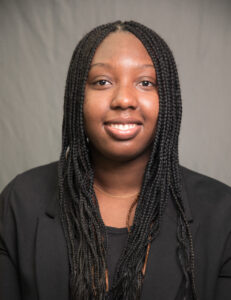
Class of 2027
www.linkedin.com/in/aureliane-t-2944762b6
I am currently a computer science major at the University of Maryland, Baltimore Couty. My passion for computer science comes from seeing it as a way to understand how different things work together in life and appreciating how a functional project can come into fruition from a single idea. My goal in life is to have a positive impact on the world, and this summer with STEPS allowed me to contribute to environmental and sustainability efforts. This research experience also allowed me to learn valuable technical skills, such as navigating ArcGIS Pro and using R. These skills will be useful in the future, especially since I plan to pursue a PhD in computer science.
I really enjoyed the STEPS REU because I learned a lot from the experience, including what convergence research is and why it is important that the cycle of phosphorus needs to be improved.
Research Poster: Determining Animal Count Using Structure Attributes through Image Digitization
Project Description
Animal Feeding Operations (AFOs) which either occur in spatial clusters or as large establishments have a few undesired negative impacts on the environment, including harm to water quality because of phosphorus-containing manure that ends up in bodies of water. To tackle this issue, AFOs need to be extensively studied. However, there is little data on AFOs and the enforcement of reporting data is not very strong. Therefore, the goal of the research is to determine if there is a relationship between the size of animal structures and the number of animals they house. Utilizing ArcGIS Pro’s geoprocessing tools and lists of AFO sites in North Carolina and California, the areas of structures of chosen sites were manually measured by looking at satellite images. The sites chosen were in AFO-dense counties from each state, respectively Duplin County and Merced County. Thereafter, the measured data was compared with permitted animal count to explore the relationship between size of structures and livestock inventories. The results showed that there is a positive correlation between animal count and the size of structures. It also shows that other factors such as the animal operation type and different stages of feeding operations could also be used in determining the animal count. For future work, the data can be used as part of training samples for an algorithm that will be able to identify barns on its own. The anticipated result of the algorithm is that it will be able to identify animal structures and determine the likely number of animals housed there. This research is a step towards finding solutions for mass manure management by giving insight and more information about the AFO capacities.
Génesis Vargas González
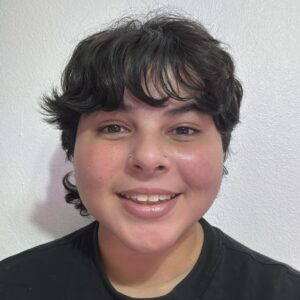
Horticulture Major at the University of Puerto Rico- Mayagüez
Class of 2025
https://www.linkedin.com/in/genesis-vargas-6847411b5
My motivation to study horticulture and agricultural education stem from my experiences living on a food-insecure island and the desire to make a difference, one plant at a time. I’ve gained most of my experience in Tropical Agriculture through my classes, agroecological farm work, outreach, assisting in my university’s soils lab, and being involved in associations with other students who are passionate about agriculture and sustainability. During my REU I conducted research under the guidance of Dr. Matthew Ogwu and Dr. Anne Fanatico at Appalachian State University. This research was focused on uncovering the processes behind nutrient cycling. This included understanding the roles of bacteria, fungi and phosphorus in the phyllosphere (plant surfaces), the application of these concepts in sustainable farming through experiences in the LLC community garden, and outreach to understand the social implications of agriculture and sustainable practices in our communities. I am grateful for the opportunities that the STEPS-REU program has given me to explore agricultural research and to be involved in the creation of sustainable solutions for phosphorus management. Through this experience, I’ve discovered a passion for crop protection and found focus within my own field. In the future I envision myself continuing on to my graduate studies in the areas of horticulture and plant pathology. Additionally, I am interested in researching their applications in agroforestry and conservation practices for tropical crops and native plant species. Ultimately, my goal is to contribute to sustainable practices for food sovereignty and the conservation our natural resources through research and agricultural work.
Research Poster: Intersectionalities Between the Phyllosphere, Phosphorus and Our Communities
Project Description
My individual REU project explored “The intersectionalities between the phyllosphere, phosphorus, and our communities”. By observing changes in bacterial and fungal community composition within the agricultural context, we could decipher the effects of specific metabolic functions, successional patterns, and stochastic factors on plant health and subsequent growth. We utilized 16s rRNA and ITS metagenomic sequencing methods to obtain genetic data from the phyllosphere of the model plant, Arabidopsis thaliana. We observed changes in bacterial and fungal communities after the inoculation of Pseudomonas fluorescens (PF) and Saccharomyces cerevisiae (SC) extra cellular vesicles (EVs) in soil. We’ve been able to identify an abundance of specific taxa associated with plant growth, nutrient uptake of minerals such as phosphorus, plant defenses and other adaptations. Changes in microbial diversity after the application of EVs indicate that the phyllosphere and rhizosphere behave synergistically to maintain microbial communities and to adapt to changes in the environment. This experiment was also designed to assess the influence of different concentrations and combinations of EVs. These results have associated the success of certain microbial communities with the symbiotic interactions between some bacterial and fungal taxa.
These interactions could also be observed through our work in the LLC garden and soil sampling in Ore Knob and Robeson County. By comparing areas with different microbial conditions, conservation methods or lack thereof, and different nutrient applications, the effects of nutrient cycling on soil structure can be observed. Additionally, these findings may benefit farmers and community members faced with challenges related to nutrient management and plant health. Hopefully, the contributions of my cohort and I will further the discovery of more sustainable methods for promoting healthier microbial communities and overall plant health.
